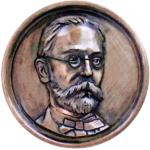Current issue
Online first
Special issues
Archive
About the Journal
Editorial Board
Editorial Council
Reviewers
Editorial guidelines
Publication ethics
Guidelines for reviewing
Remarks on “ghostwriting”
Copyrights and Open Access rule
GDPR Privacy Notice – for the authors of articles sent for publication in the "Komunikaty Mazursko-Warmińskie ("Masuro-Warmian Bulletin")
Contact
Price list
“Ta Swenta Woyna” of John Bunyan translated by Jacob Sczepan as a monument of Masurian culture
Online publication date: 2020-12-05
Publication date: 2020-12-05
KMW 2020;309(3):328-348
KEYWORDS
Masurian dialectdialectologymembers of the Fellowship MovementJacob SczepanJohn BunyanKazimierz NitschWitówkoNidzicaWestphalia
TOPICS
ABSTRACT
The diversity of Masurian dialects, the lack among the Masurian society of well-educated people who use these dialects on a daily basis made it impossible to develop a uniform dialect pattern. This, in turn, caused that there are no examples of Masurian dialect literature. In 1975, Prof. Wojciech Chojnacki described John Bunyan’s “The Holy War”, which was published in 1900 in Herne, Westphalia, translated into the Masurian dialect and given the dialect title “Ta Swenta Woyna”. The book was translated and published by a miner, Jacob Sczepan. A renewed interest in the translation of Bunyan’s work appeared after the publication of its digitized version by the University Library of the University of Warmia and Mazury in Olsztyn in 2017. The analysis of the dialect used by Sczepan allowed to classify it to the West Masurian dialect in its Nidzica form. Research queries of address and parish registers revealed only one person who could have been the author of the translation, i.e. Jacob Sczepan, born on 21.7.1867 in Witówko (Nidzica Poviat). The same Jacob Sczepan, a mining foreman, was recorded in the address register of the city of Herne in 1900. The Westphalian miner from Masuria was probably a member of the Fellow-ship Movement, while Bunyan’s work was one of the most significant and popular pietistic works. Sczepan ad-dressed his translation to pious Masurian exiles like him. For this reason, his dialect is faithful to the language spo-ken at the turn of the 19th and 20th centuries by the inhabitants of the Nidzica, Działdowo and Szczytno areas. This authenticity of Sczepan’s dialect makes his work unique. There is no other such extensive and authentic record of the already extinct dialect in the Masurian culture. The translation of Bunyan’s book was intended to enlighten and comfort his countrymen torn from steeped-in-traditional-piety Masuria, who were thrown into the industrialised world of the Ruhr region. However, for us, it is a valuable monument of the culture that no longer exists today.
We process personal data collected when visiting the website. The function of obtaining information about users and their behavior is carried out by voluntarily entered information in forms and saving cookies in end devices. Data, including cookies, are used to provide services, improve the user experience and to analyze the traffic in accordance with the Privacy policy. Data are also collected and processed by Google Analytics tool (more).
You can change cookies settings in your browser. Restricted use of cookies in the browser configuration may affect some functionalities of the website.
You can change cookies settings in your browser. Restricted use of cookies in the browser configuration may affect some functionalities of the website.




